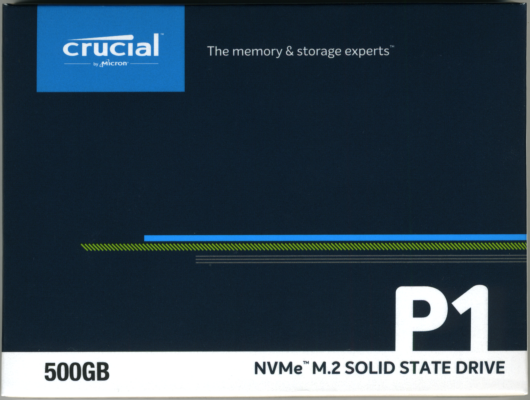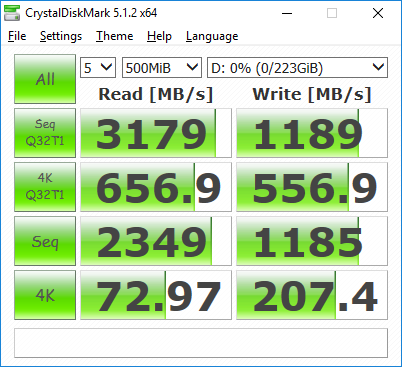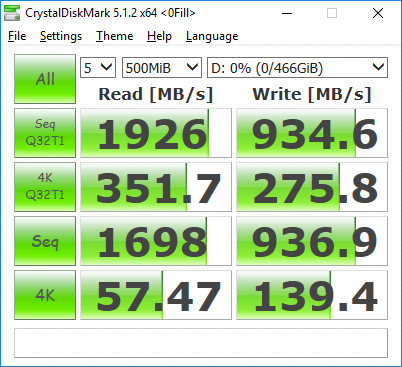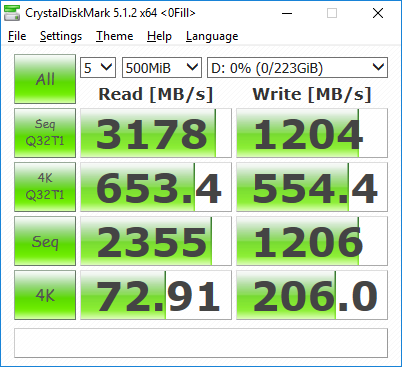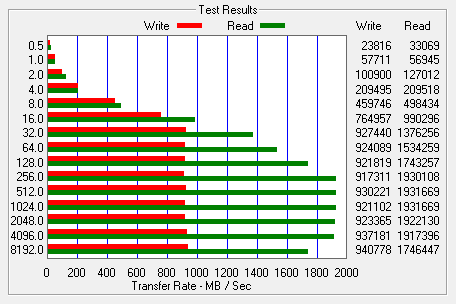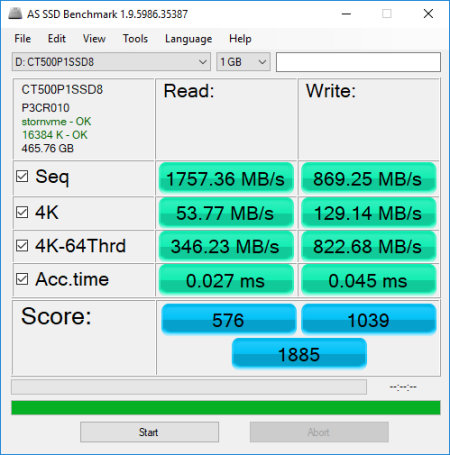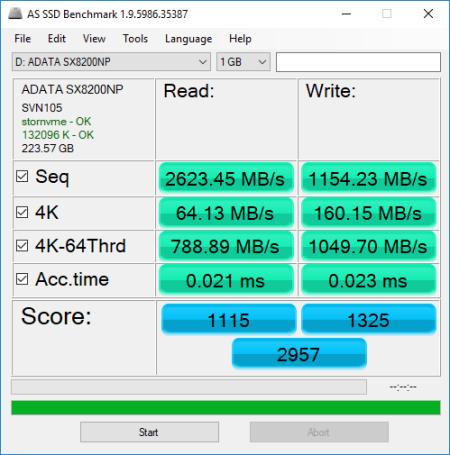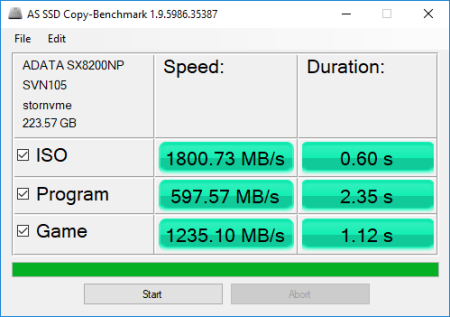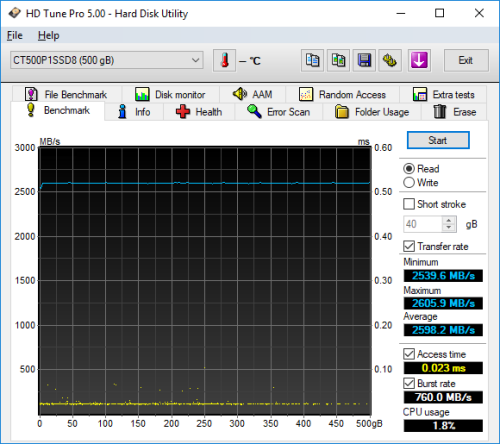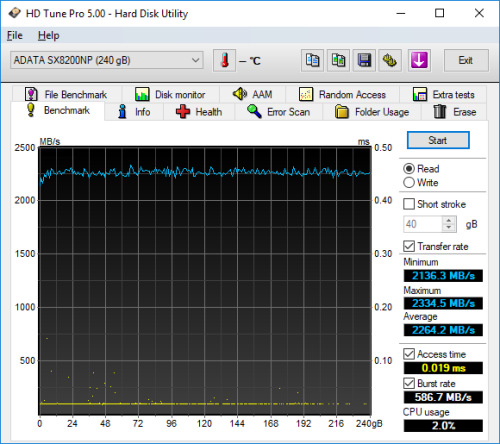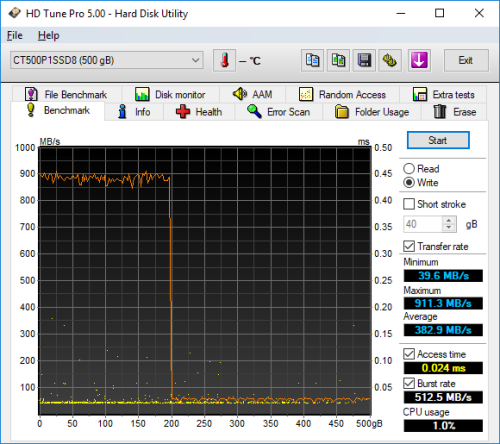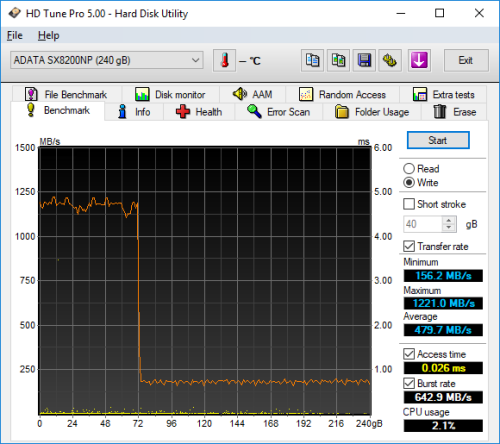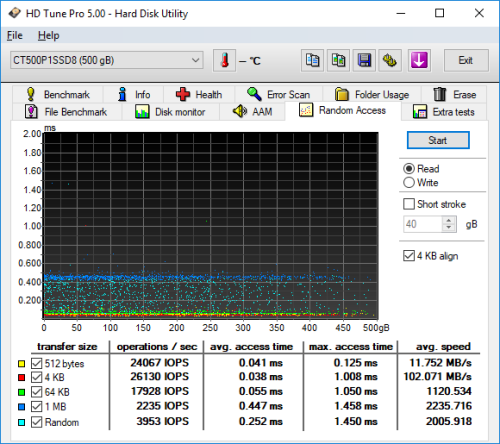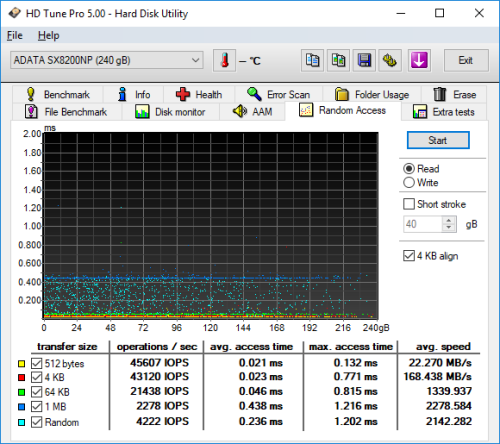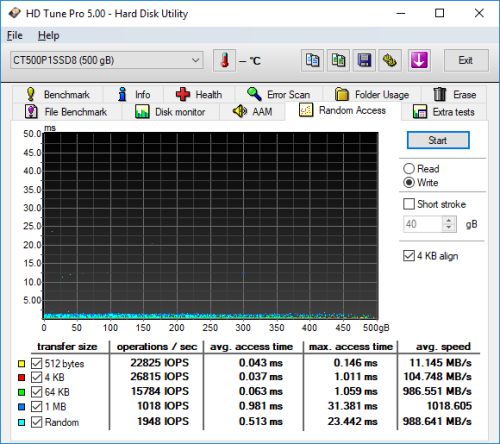

Model: Crucial P1 500GB NVMe PCIe M.2 Solid State Drive
Manufacturer: Crucial
Provided By: Crucial
Crucial is a global brand of Micron Technology, Inc., one of the largest memory and flash storage manufacturers in the world. The company's product lineup includes award-winning solid state drives (SSDs) and computer memory upgrades (DRAM) for more than 50,000 systems. These products have been qualified and approved by major original equipment manufacturers and every single module has been rigorously tested at the component and module level. Each SSD also undergoes over a thousand hours of prerelease validation testing and hundreds of qualification tests to ensure optimal reliability and performance.
This fall, Crucial launched its first NVMe PCIe SSD, the P1. Designed for the enthusiast or gamer on a budget, this M.2 form factor drive is powered by Silicon Motion's new SM2263EN controller and is available with up to 2TB of Micron's 3D QLC NAND flash. To compensate for the slow write speeds typically associated with QLC NAND, the P1 uses a unique SLC cache implementation called hybrid-dynamic write acceleration to provide consistent performance. To top it all off, the drive is equipped with an ultra-fast PCIe Gen3 x4 NVMe 1.3 interface and is capable of 2,000 MB/s read and 1,750 MB/s write speeds and a maximum of 250,000 random write IOPS.
The P1 is available in 500GB, 1TB and 2TB capacities. For this review, Crucial sent us the 500GB version of the drive which is capable of delivering up to 1,900 MB/s sequential read and 950 MB/s sequential write speeds as well as up to 90,000 random read and 220,000 random write IOPS.
| Crucial P1 500GB NVMe PCIe M.2 Solid State Drive | |||||||||||||||||||||||||||
General Specifications
Performance
Reliability
Environmental
Other Features
|
Needless to say, this is only a taste of what the P1 has to offer. To give you an idea of what to expect, we'll take a closer look at Crucial's new PCIe NVMe SSD and then see how well it performs. Does the P1 have what it takes? More importantly, is it the best bang for your buck? Keep reading as we find out.
The P1 comes in a small, blue box. While there aren't a lot of technical details, the packaging advertises some of the drive's key features including its 500GB capacity, support for NVMe, and 5 year warranty. The back of the box also has a small window that lets you see the drive and view the QR code on it. Inside, you'll find the P1 as well as a small guide with information on where you can get additional help and download the migration and cloning software.

Physical Features:
The P1 uses the 2280 form factor for M.2 (NGFF) SSDs. It measures 22 x 80 x 2.2 mm and weighs less than 10g. The drive also has an "M key" edge connector which provides PCIe SSDs with up to 4x lanes of bandwidth.

The P1 is one of the first drives to use Silicon Motion's new SM2263EN controller. Designed for cost-effective, small form factor SSDs, this 4 channel, PCIe Gen 3 x4 SSD controller is powered by a dual ARM Cortex CPU and offers support for 3D NAND from all the major suppliers. The SM2263EN also employs Silicon Motion's proprietary NANDXtend error-correcting code (ECC) technology to enhance the endurance and retention of 3D NAND and provide comprehensive data protection.

It's hard to see in these photos, but there is a small, green LED near the M.2 connector that flashes when the P1 is being accessed.

For the 500GB version of the P1, Crucial opted to use Micron's QLC 64-layer 3D NAND flash. Looking at the picture above, you can see that there are two 256GB NAND flash packages on the top of the PCB. The drive also has a single 512MB Micron DDR3L SDRAM memory chip that is used for caching.
The test system used in this review is equipped with an Intel Core i7-6700K CPU, GIGABYTE GA-Z170X-UD3 motherboard, 32GB (16GB x 2) of Crucial Ballistix Sport LT DDR4 memory, Samsung 960 PRO 512GB SSD and a GIGABYTE GeForce GTX 1060 WINDFORCE OC 6G graphics card. For the operating system, I installed a fresh copy of Windows 10 Enterprise.
To test the performance of Crucial's P1 SSD, I ran a series of benchmarks using CrystalDiskMark, HD Tach RW, ATTO Disk Benchmark, AS SSD, HD Tune Pro, Anvil's Storage Utilities, Iometer and PCMark 8. For comparison, I've also included test results from the ADATA XPG SX8200, Western Digital WD Black NVMe, Samsung 970 EVO, Samsung 970 PRO, Plextor M9Pe, Plextor M8Se, Patriot Hellfire, ADATA XPG SX8000, Samsung 960 PRO, Toshiba OCZ RD400, Samsung 950 PRO, Samsung 860 QVO, Samsung 860 PRO, Crucial MX500, Plextor M8V, Samsung T5, Crucial BX300, ADATA Ultimate SU900, Plextor S3C, Toshiba OCZ VX500, ADATA Ultimate SU800, Plextor S2C and Crucial MX300.

As I mentioned earlier, the P1 is based on Silicon Motion's SM2263EN controller chip. Looking at the screenshot above, you can see that it performs equally well with both incompressible (0%) and compressible (100%) data.
CrystalDiskMark 5.1.2:
First, I ran a few quick tests using CrystalDiskMark. This benchmark tool measures the performance of a storage device by testing its sequential read and write speeds as well as its random read and write speeds using blocks 512K and 4K in size.
According to Crucial, the 500GB version of the P1 is capable of reading at 1,950 MB/s and writing at 950 MB/s. While the drive performed well, it came up a bit short of these numbers in CrystalDiskMark's sequential read and write speed tests.
The P1 performed equally well when using highly compressible 0x00 (0 Fill) data. This time around, the drive was able to read at 1,926 MB/s and write at 934.6 MB/s.
HD Tach RW 3.0.4.0:
Next, I used HD Tach to test the Crucial P1's read, write and burst speeds as well as its seek times and CPU usage.

Looking at the screenshot above, you can see that the P1 had average read and write speeds of 1536.6 MB/s and 179.6 MB/s respectively, as well as a burst speed of 1312.1 MB/s. The screenshot also shows that it uses some sort of SLC caching. The drive starts writing at about 900 MB/s and then drops to about 50 MB/s when the write operation exceeds the size of the cache.
ATTO Disk Benchmark 2.46:
I also used ATTO Disk Benchmark to test the Crucial P1's sequential read and write speeds. The tests are run using blocks ranging in size from 0.5KB to 8192KB and the total length set to 256MB.
When tested with ATTO, the Crucial P1's read speeds topped out at about 1,931 MB/s and its write speeds at 927 MB/s.
AS SSD:
AS SSD is a relatively new benchmark designed specifically for solid state drives. The application contains five synthetic tests used to determine the sequential and random read and write performance of a drive.
AS SSD also includes a copy benchmark. This test copies an ISO (two large files), program (many small files) and game (small and large files), returning the speed and duration of each.
HD Tune Pro 5.00:
Next, I ran a series of tests using HD Tune Pro. This hard disk utility measures a drive's performance by testing its sequential read and write speeds as well as its access time, burst rate and CPU usage. For this review, I'm also going to use it to benchmark the Crucial P1's random read and write speeds, random access times and the number of operations per second.
The P1 performed relatively well when benchmarked with HD Tune. The drive had average read and write speeds of 2598.2 MB/s and 382.9 MB/s, respectively, and a burst rate of 760.0 MB/s when reading.
When reading 4KB blocks, the P1 reached 26,130 IOPS and had an average speed of 102.071 MB/s. The drive was slightly faster when writing, reaching 26,815 IOPS with an average speed of 104.748 MB/s.
Anvil's Storage Utilities:
Anvil's Storage Utilities is another benchmark designed with SSDs in mind. The standard storage benchmark measures a drive's performance by testing its transfer speeds, access times and IOPS.

Iometer:
Lastly, I ran a series of tests using Iometer. This tool can be configured to benchmark a number of things. In this case, I used it to measure the P1's read and write speeds and the number of operations per second. The tests were run using random bytes and a queue depth of 3.
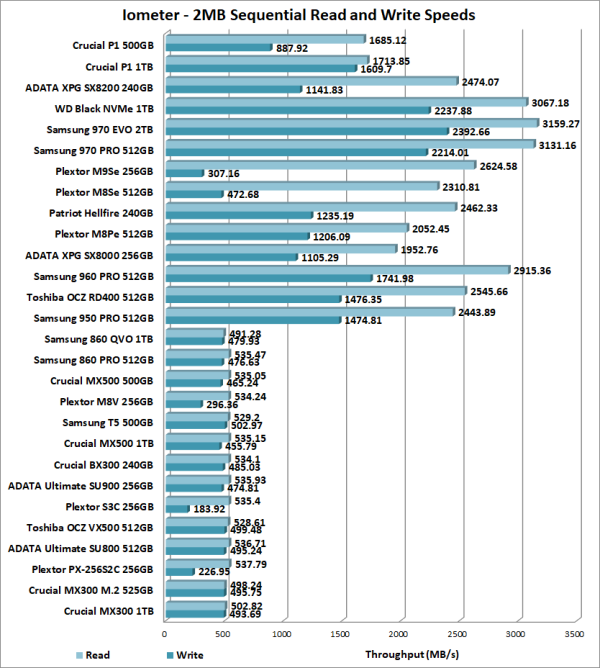
The P1's performance was very similar to what we saw in our other tests. The drive was able to read at 1685.12 MB/s and write at 887.92 MB/s.

The P1 also performed fairly well when doing random reads and writes. In our tests, the drive was able to read at 243.63 MB/s and write at 554.95 MB/s.

According to Crucial, the 500GB P1 is capable of 90,000 IOPS when reading and 220,000 IOPS when writing 4K blocks. In our tests, the drive reached 62,370 random read IOPS and 142,068 random write IOPS. As with most drives, the P1 performed better at higher queue depths. With the queue depth set to 32, it reached 87,464 random read IOPS and 164,844 random write IOPS.
PCMark 8 - Storage Test:
PCMark 8 is a complete benchmark for Windows. It includes five benchmark tests, each designed around a specific scenario. The storage benchmark measures drive performance using real-world traces recorded from Adobe Creative Suite, Microsoft Office and a selection of popular games.

PCMark 8 also includes a consistency test which measures the performance consistency and degradation tendency of a storage system. The test reports the performance level at the start, the degraded steady-state and the recovered state as well as the number of iterations required to reach the degraded state and the recovered state. For this test, we are focusing on the Adobe Photoshop (Heavy) trace and will look at both the bandwidth and latency of the drive
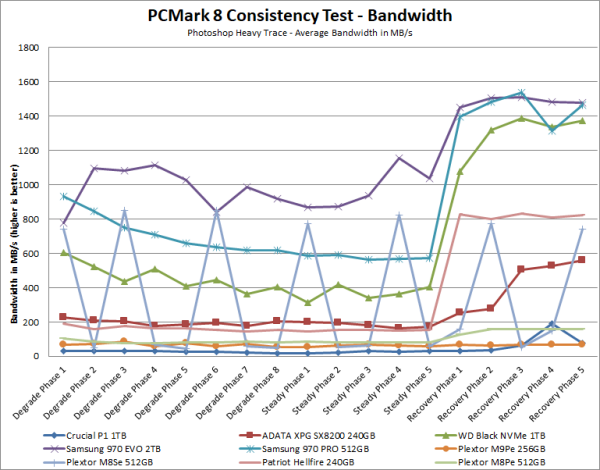
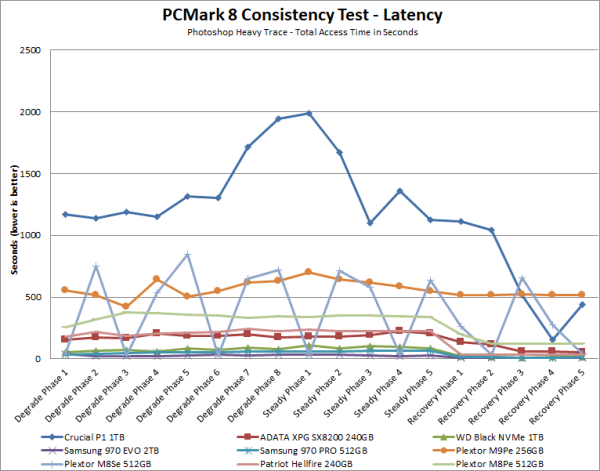
The P1 didn't do as well as the other SSDs in this test. Its bandwidth dropped below 20 MB/s during the degradation and steady phases, pushing its latency well above the 2,000ms mark. The P1 never really recovered either, topping out at a mere 46 MB/s.
TRIM Performance:
While SSD's offer many benefits, there are some downsides to using flash memory. One of the biggest issues people run into is performance degradation. Over time, an SSD will run out of fresh blocks and will have to write over data the file system has marked as deleted. This procedure is very complicated and can slow an SSD's write speeds considerably.
To fix this problem, most manufacturers have added TRIM support to their SSDs. The TRIM command allows an operating system, such as Windows 7, to tell an SSD which data blocks are no longer in use. Using this information, the drive pro-actively erases these blocks and adds them to the free block pool.

To test the P1's TRIM and garbage collection functions, I first put the drive in a "dirty" state. I used Iometer to fill 80% of the drive and then ran a random write test for 30 minutes. This had little impact on the P1's read speed. However, its average writing speed dropped to 45.49 MB/s.
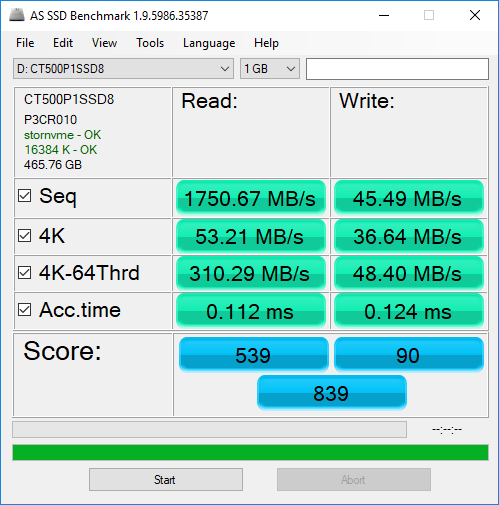
Crucial P1 - Dirty
To see how well the P1 could recover, I let the computer sit for about 30 minutes and then reran the test. The drive wasn't able to reach the factory fresh performance shown in our earlier tests. However, its sequential write speed jumped up to 843.81 MB/s.
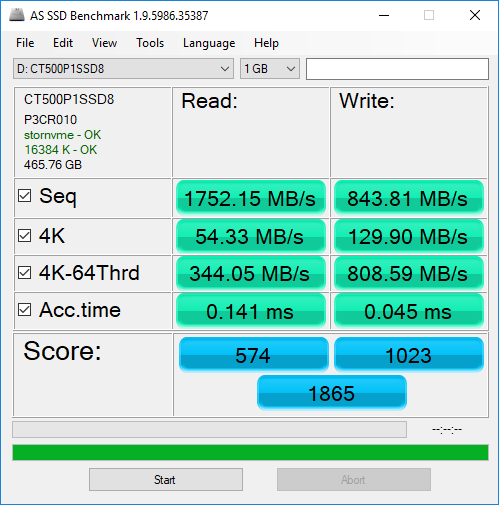
Crucial P1 - After TRIM
Lastly, I used Parted Magic to perform a secure erase on the P1. With the drive wiped clean, it had average read and write speeds of 1757.94 MB/s and 899.97 MB/s, respectively.

Crucial P1 - Secure Erased
Final Thoughts:
While not the fastest or most feature packed PCIe SSD to come through the 'Labs, the Crucial P1 offers a lot of bang for your buck. This compact, M.2 form factor SSD is powered by Silicon Motion's SM2263EN controller and is available with up to 2TB of Micron's 3D QLC NAND flash. Combine this with a PCIe Gen3 x4 NVMe 1.3 interface and you have an affordable, high capacity drive capable of delivering performance well beyond that of your average SATA 6Gb/s SSD. In our sequential read and write tests, the 500GB version of the P1 was able to read at speeds as high as 1,931 MB/s and write at speeds in excess of 927 MB/s. The drive also did relatively well in our random write tests, producing more than 142,000 IOPS at low queue depths.
Of course, fast read and write speeds aren't the only things the P1 has to offer. In addition to a large DRAM cache buffer, the drive uses hybrid-dynamic write acceleration to help boost write performance. The P1 also features power loss protection for data-at-rest, static and dynamic wear leveling and TRIM support. To top it all off, it comes with Acronis True Image cloning software and is covered by a generous 5 year warranty.
The Crucial P1 is available now in 500GB and 1TB capacities. Prices on Amazon.com start at $90 for the 500GB drive reviewed here and go up to $170 for the 1TB version. The 2TB model has not shipped yet but is expected to hit retailers some time in the near future.

Highs:
- Available in 500GB, 1TB and 2TB capacities
- PCIe 3.0 x4 interface with NVMe protocol
- Silicon Motion SM2263EN controller
- Equipped with Micron 3D QLC NAND
- Good sequential and random read and write performance
- Small M.2 2280 form factor
- Large DRAM cache
- Hybrid-dynamic write acceleration
- Includes Acronis True Image cloning software
- Reasonably priced
- 5 year warranty
Lows:
- Write speed drops when SLC cache is full
- Does not support hardware based encryption
